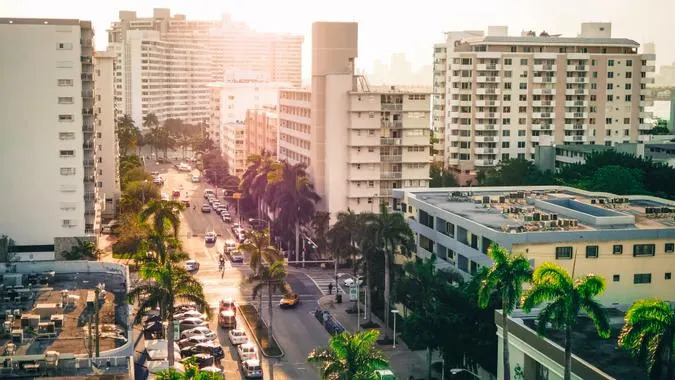AZ Central – The Arizona Republic
Only women who suffered in Russian prisons can know Brittney Griner’s agony
Phil Boas, Arizona Republic – December 1, 2022
The story of Brittney Griner may ultimately turn out to be an historic marker that shows just how completely ignorant Americans were of their world in the early 21st century.
It may show how the people of this country were so removed from history and hard facts we could not comprehend the story of a Phoenix pro basketball player taken prisoner by the Russians.
This is not a story about a woman who did the crime and now must do the time.
If you believe that, you’re not only a fool, you’re a mean and ignorant lout.
Nor is this the story of U.S. indifference to women of color or LGBTQ people, or some sign we need to reform America’s draconian marijuana laws.
If you believe that, you’re indecent. You’re exploiting someone else’s suffering to advance your politics.
The Brittney Griner story is really an old story, a soul crushing tale of how historic events are indifferent to the agony of a single human being.
Brittney Griner could spend her life in prison

We all know Griner’s predicament could end tomorrow with a U.S.-Russian prisoner swap. But what few are saying and must know is that it might never end, that Brittney Griner is caught in the awakening gears of a changing world and could conceivably spend the rest of her life in captivity.
Even before the Russians seized upon her as a bargaining chip exactly one week before its Feb. 24 invasion of Ukraine, people were writing and speaking about what she is facing.
They are the only people who truly understand Brittney Griner. They’re women, they’re mostly Russian, and they have endured one of the worst penal systems on earth − the Russian gulag.
After Griner’s sentence:Russian media plays the international victim card
They know that what is in store for her is utterly hair-raising – a misery that few civilized people will ever know or comprehend.
Wait a minute, you say. The gulag? Isn’t that a relic of Soviet communism and Alexander Solzhenitsyn and “One Day in the Life of Ivan Denisovich”?
No.
The Russian gulag lives. And Brittney Griner is trapped in its gear train.
Human rights violations, torture are common
“Our prison system was never reformed,” said “Nadya” Tolokonnikova, a member of the Russian punk band and activist group Pussy Riot and one of Griner’s fiercest advocates.
In March 2012, “Nadya” was arrested with other members of her band after protesting 40 seconds against Vladimir Putin’s Russia at Moscow’s Cathedral of Christ the Savior. She was sentenced to two years in prison.
“There was no period after gulag time,” she told the Oxford Union Society. There was talk of reforming Russian prisons, but “they never did it. That’s why we still live in barracks. Still live like slaves. One hundred women are sharing three toilets, and you can imagine what kind of mayhem (that causes) in the morning. It’s no fun.”
Jan Strzelecki, writing in 2019 for The Centre for Eastern Studies, noted that “most Russian penal colonies and prisons were built back in Stalinist times. Despite several attempts to reform the prison system in Russia, they still resemble the Soviet Gulag: human rights violations and torture are common.”
If Russian prisons are bad, Griner is getting the worst of it.
She is serving her nine-year sentence in IK-2, part of a notorious system of Russian penal colonies near Mordovia, a region about 300 miles east of Moscow, The (London) Guardian reports. “The prisons were built in the early 1930s as part of the gulag system of the Stalin era and together make up one of the largest penal complexes in Europe.”
Griner was sent to Russia’s ‘worst’ penal colony
Griner was arrested and later convicted of possessing vape cartridges with tiny amounts of marijuana. Yet, that is immaterial. Her sentence is a sham, because there is no Russian justice system.
In 2016, the acquittal rate in Russia’s criminal courts was a “merciless” 0.36%, reports the news-commentary site Riddle. The prison where Griner is serving her sentence cares nothing about justice or human dignity.
When Pussy Riot learned where Griner was headed, it tweeted out to its 243,000 followers, “Brittney Griner was transported to IK-2 Mordovia, the WORST penal colony in Russia.”
“Nadya” Tolokonnikova told MSNBC, “I’m terrified that Brittney Griner was moved to IK-2. … I was protesting terrible conditions in my penal colony, but I know (about) every chief official who works at IK-2 and I know exactly what human rights abuses they perform on a daily basis and the kinds of tortures that they use against prisoners.”
It has become a common phrase among Russian inmates that “If you haven’t served time in Mordovia, you know nothing about prison.”
Gelena Alekseyeva, a former government minister in Saratov, a port city on the Volga, served 3½ years in Mordovia for abetting commercial bribery.
“When the girls find out that they’re going to Mordovia, they cut their wrists, do everything possible: get sick, swallow nails, just so they don’t have to go there,” she told RadioFreeEurope.
Prisoners are punished psychologically
In a September 2013 letter, Pussy Riot’s “Nadya” described how Russian internment is not just a prison of walls and barbed wire.
It’s a prison of forgotten history, of remote geography; a prison of the mind and of physical deprivation; a prison of concentric circles that surround each inmate and make their lives a living hell.
The female wards of Mordovia are caught in a “medieval” system that most of the rest of the world left behind many decades ago.
To demonstrate that point, “Galena” told the story of the cats.
In Russian prisons cats are common because the places are overrun with vermin. “Mice lived with us. Rats lived with us in the industrial zone. Before you went into the bathroom, you needed to knock – there were special poles for that. So that the rats would scatter, you understand.”
To attack the problem, the prisons introduced cats to kill the rats. But the cats would reproduce and create their own problem, she told RadioFreeEurope. The Russians solved that by gathering up the kittens and throwing them into a sack and then into a furnace.
Starved for companionship, Russian women inmates grow fond of the cats. “There is nothing more dear to the inmates than these kittens and cats. But they can also be used for punishment. So, if you sewed badly today then we will burn the cats! They don’t punish one or two people − they punish a whole brigade.”
They also engage in slave labor
The sewing is a reference to the day labor of Russian women prisoners. In her letter on prison conditions, “Nadya” wrote, “My brigade in the sewing shop works 16 to 17 hours a day. From 7.30 am to 12.30 am. At best, we get four hours of sleep a night. We have a day off once every month and a half. We work almost every Sunday.”
The sewing machines are “ancient” and dangerous, she wrote. “Your hands are pierced with needle marks and covered in scratches, your blood is all over the work table, but still, you keep sewing.”
“Galena” explained how the old industrial sewing equipment makes it very easy to make a mistake.
“The saw cuts the fabric along a chalk line continuously. God forbid, if the saw cuts somewhere else [and not on the chalk line], then all 100 cuts are ruined. I can say that fingers on the saw are chopped off, cut, blood flows. This is definitely unsafe, requiring some training.”
Miss a quota and not only you, but your entire brigade of prisoners is punished. This breeds anger and resentment.
“Prisoners are always on the verge of breaking down, screaming at each other, fighting over the smallest things. Just recently a young woman got stabbed in the head with a pair of scissors because she didn’t turn in a pair of pants on time.”
Prisons turn prisoner against prisoner
Those who disobey orders can be sent outdoors into the Russian winter.
“Nadya” told of one woman from a brigade of disabled and elderly prisoners who was punished this way for an entire day. Her frostbite was so bad “they had to amputate her fingers and one of her feet.”
One of the age-old techniques of Russian prisons is to turn prisoner against prisoner.
In their book “Before and After Prison: Women’s Stories,” a group of Russian sociologists explained that the heavy surveillance in Russian women’s prisons is enhanced by a less formal system of snitching.
“The system of squealing and earning high marks with the management for snooping on others, which was originally created in the Gulag [Soviet-era labor camps], has effectively survived until the present day,” St. Petersburg sociologist Yelena Omelchenko told The Moscow Times.
The result is an inmate population that doesn’t trust one another and routinely acts out in retribution.
“Women are cruel, and they are extremely nasty to each other, vicious as hell,” said Yulia, a prisoner whose story is included in the book. “If you are ill, or weak or old, they will be sure to exploit you, humiliate you, harass you, sometimes just for fun.
“… We were working in a sewing workshop in the colony, and some vicious inmates would cut the items that the girls in my team made so that we would fail to fulfill the plan.”
It’s all designed to dispirit inmates
That cruelty starts at the very beginning.
When Veronika Krass entered prison IK-14 in Mordovia in 2014, her eyes were drawn to the words on the entrance wall.
“Welcome To Hell.”
“When someone enters the colony, there’s a lineup in the yard,” she told RadioFreeEurope. “Everyone yells, ‘Fresh meat has arrived.’ The (new) inmates react of course to this − they are afraid.”
Soon they will be caught up in a system that deprives them of privacy, self-respect, food and their own humanity.
“The food and hygiene were unspeakable,” wrote “Nadya.” “It was a degrading and humiliating experience, and a great trauma for everyone who went through it.
Food consisted of rotten “slimy blackened” potatoes, stale bread and watered-down milk and rancid porridge, she said.
Know what Griner is facing before you speak
In her prison, “Galina” said, “It was awful, and really felt like barracks. And there was only one toilet room − with two toilets in it − per one detachment of three hundred people, who had a total of half an hour in the morning to use this toilet. It was surreal. […] We hardly ever had hot water, and the toilets, if they broke, would not be repaired. It was a concentration camp.”
Wrote “Nadya” in her letter, “Life in the colony is constructed in such a way as to make the inmate feel like a filthy animal who has no rights.”
“When the pipes get clogged, urine bursts forth from the washrooms and feces fly. We have learned to clean the sewage pipes ourselves, but the results do not last long: the pipes get backed up again. The colony does not have a cable for cleaning pipes. We can wash our clothes once a week, in a small room with three faucets from which cold water drips.”
In women’s prisons, toilets and showers do not have partitions. The sociologist Omelchenko said the “devastating lack of personal space” was intentional. “Whether you are eating or working or sleeping or showering, and even when you are using the toilet, you are exposed to others.”
“When I discovered, during the course of my research, how they renovated a toilet in one colony, I was stunned,” Omelchenko recalled. “In front of a row of holes in the ground − not separated by partitions − they placed a large mirror. I am still not fully convinced that the person who was responsible for that interior design solution was not in fact a moral sadist.”
Before you condemn Brittney Griner for breaking Russian law or before you use her story to score cheap political points, you need to understand what she is facing.
You need to know that the one man who holds the key to her release, a tyrant name Vladimir Putin, is also the man most responsible for the barbaric conditions in which she now lives.
Phil Boas is an editorial columnist for The Arizona Republic.























